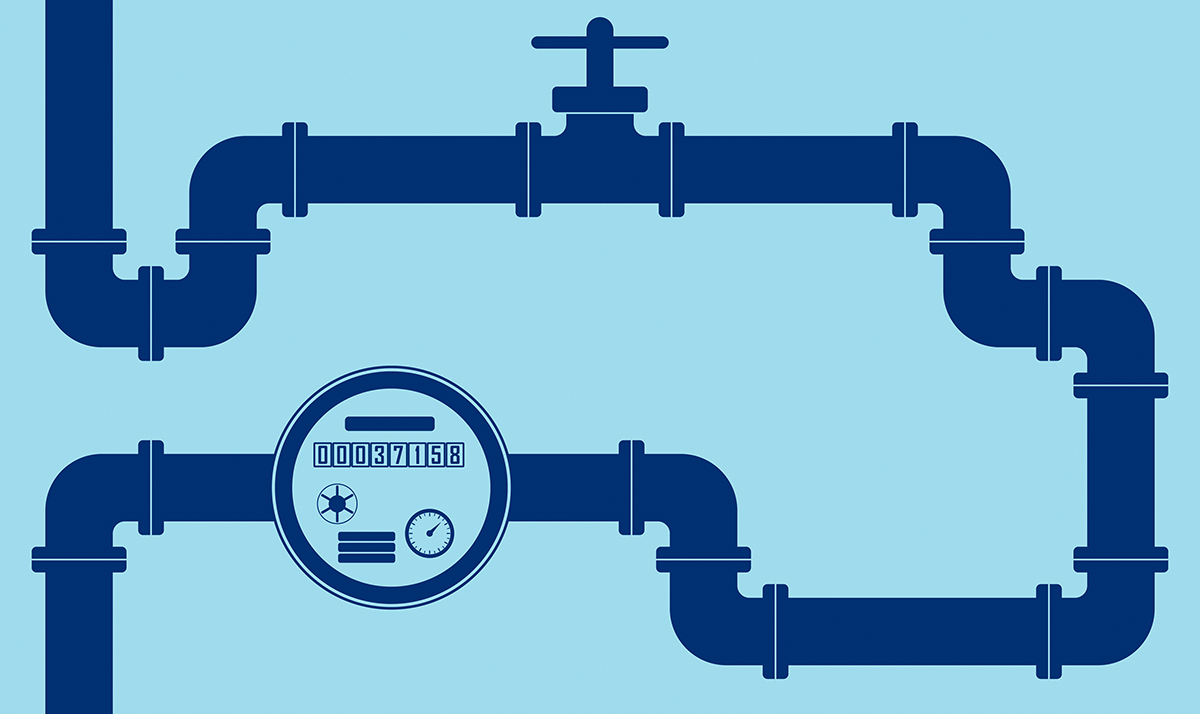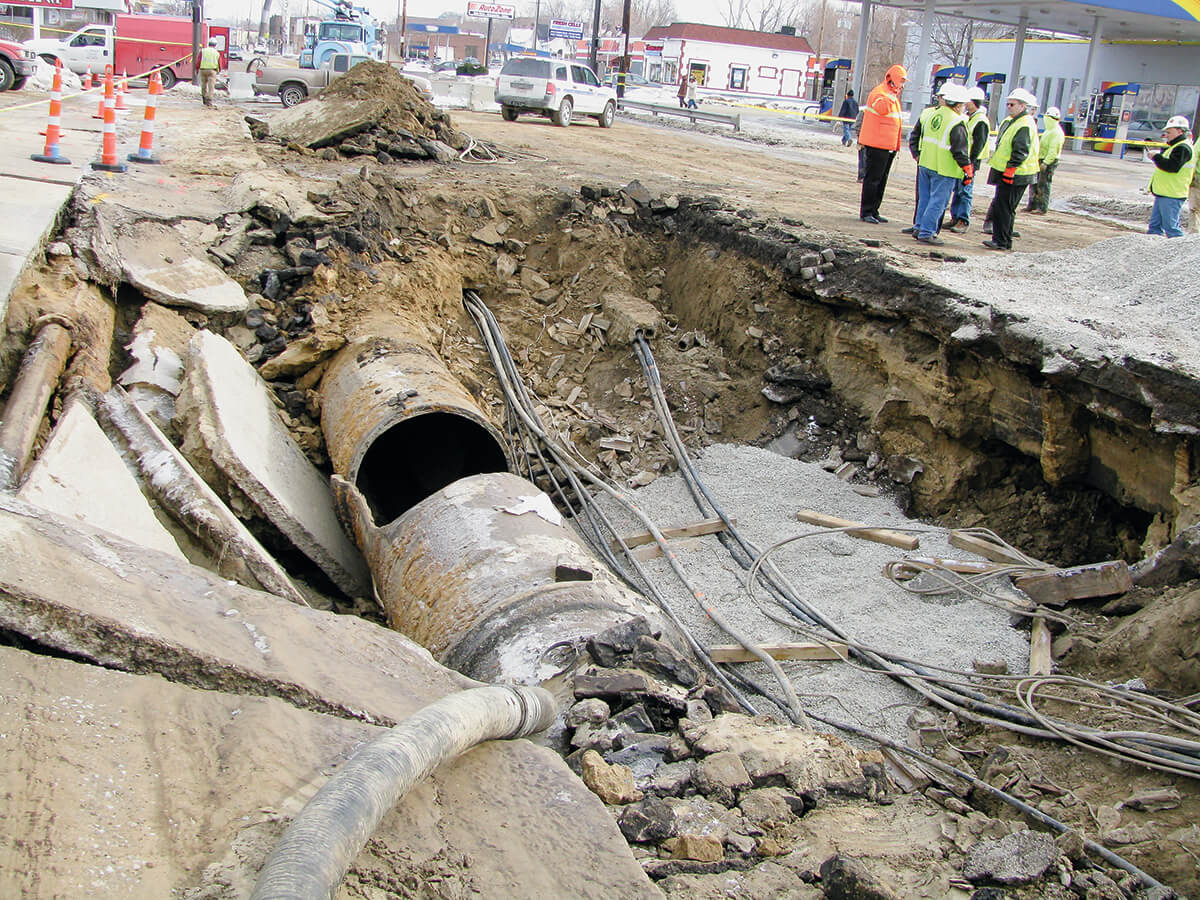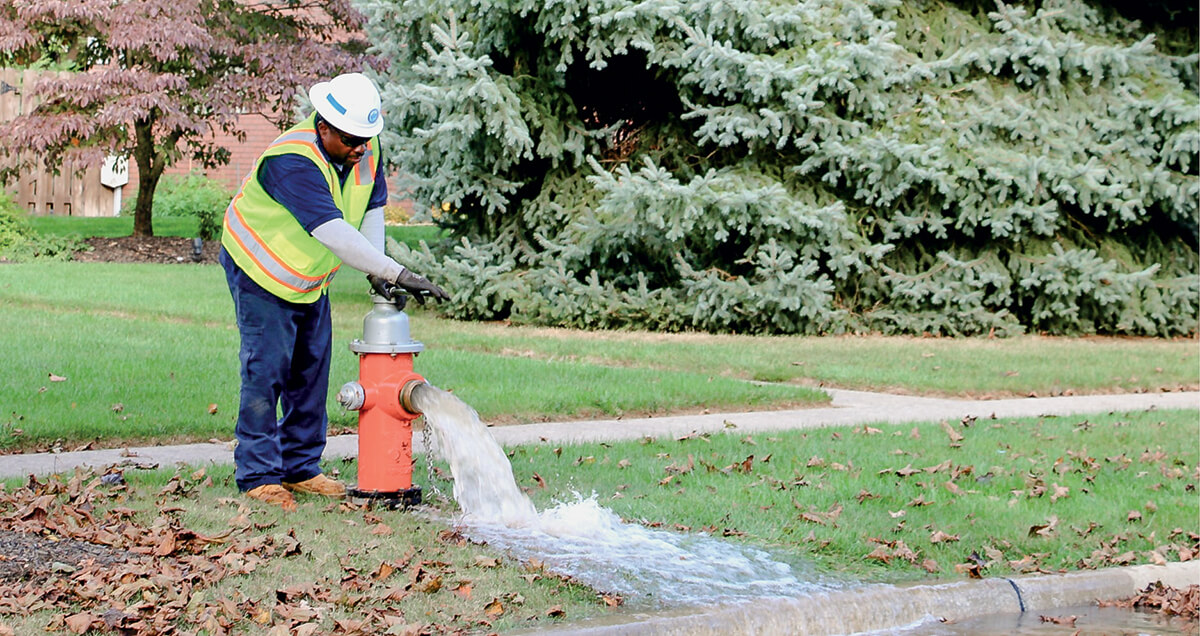lens
Finding Water Leaks, Bridging Troubles
Can artificial intelligence, mixed-reality help address aging infrastructure?
 ILLUSTRATION: ISTOCK.COM / VICTOR METELSKIY
ILLUSTRATION: ISTOCK.COM / VICTOR METELSKIYXiong "Bill" Yu, PhD, is applying artificial intelligence (AI) and mixed-reality visualization tools to better understand—and someday possibly fix—the legacy problems of leaky municipal water systems and crumbling highway bridges.
Yu, chair of the Department of Civil and Environmental Engineering at Case Western Reserve, and Alex Margevicius, Cleveland's water commissioner and a CWRU alumnus, are designing a system to mine data gathered from yet-to-be developed pressure sensors on each hydrant—to show real-time, real-location leak information. Today, workers use a hit-and-miss stethoscope-like tool to "listen" at hydrants for waterline vibrations believed to indicate pressure loss.
"We're excited about this possibility," said Margevicius (CIT '81; GRS '83, systems control and engineering). "We found 421 leaks recently using the old method, but we know that's a fraction of the leaks we could find."
Yu, the Opal J. and Richard A. Vanderhoof Professor, also is examining a better way to inspect bridges. "American bridges are in trouble," he said, "with many built in the 1950s and ‘60s—but designed to last about 50 years."
He's working with campus colleagues to develop a training program using Microsoft HoloLens mixed-reality headsets to help budding or veteran inspectors identify structural weaknesses with holographic bridges they can walk under, over and around.
Yu is working on the system with Interactive Commons, the university's innovation lab that connects people through images to solve problems.
"Inspectors on site would see the present bridge and a virtual image of its past—from data gathered at previous inspections," Yu said. "This could accelerate and improve inspections and assist decision-making."
Cleveland's Water System

- 5,300 miles of pipes
- Serves 1.4 million people in Cleveland and more than 70 other communities
- 70,000 hydrants that humans—or, someday, AI sensors—can use to "listen" for leaks
 PHOTOS COURTESY OF CLEVELAND WATER
PHOTOS COURTESY OF CLEVELAND WATER
- Large water systems lose 15% to 25% of their water, on average, often where there are joints in water mains
- City officials estimate Cleveland has about five waterline breaks per day, and up to 25 per day in the worst winter weather





